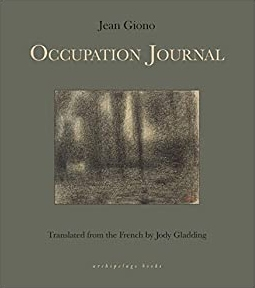Occupation Journal
French writer Jean Giono’s fascinating Occupation Journal was kept while he lived under Nazi rule.
In 1943, Giono was a respected novelist with a family to care for. He wrote his novels from Provence, drawing upon the local culture, and kept a journal for himself. The entries of the latter are alive with ideas, observations, and glimpses of Provence.
Against the backdrop of the Nazi occupation, Giono’s work becomes an effective history. His shock at witnessing people he’d known all his life collaborate with the Nazis is acute. His spare descriptions bring Provence’s rough, dwarfing beauty to life. Curious and wide-ranging, his entries probe topics ranging from the use of color in art to family dynamics, illnesses, and literature.
Giono’s reflections on literature, including Balzac and Gone With the Wind, are insightful and entertaining: he finds Scarlett O’Hara to be a cardboard puppet who’s immune flaws or messy passion, and asks “Isn’t there a little room in Atlanta where Scarlett could take off her clothes and make love to someone?” His tone throughout is both intellectual and inviting, and his entries are warm and direct.
The entries invite delight and interest, covering a broad range of topics at a pace that begs to be savored. Absent verbosity and other flourishes, the book’s few diamond-sharp details stand out. A paragraph noting the murder of an entire family by local communist teenagers reports that the youngest victim, a toddler, was killed by three bullets to the neck and one to the belly, and the information is unforgettable.
Occupation Journal is a gem of a historical memoir that includes blasts of beauty, art, and human observation.
Reviewed by
Susan Waggoner
Disclosure: This article is not an endorsement, but a review. The publisher of this book provided free copies of the book to have their book reviewed by a professional reviewer. No fee was paid by the publisher for this review. Foreword Reviews only recommends books that we love. Foreword Magazine, Inc. is disclosing this in accordance with the Federal Trade Commission’s 16 CFR, Part 255.

